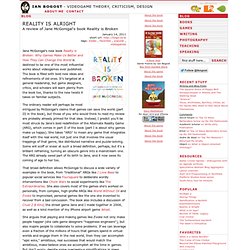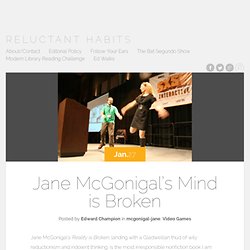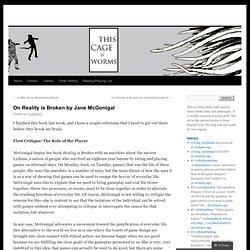

Seth kriebel unbuilt room. Ten Commandments for Gilbert and George. UP THERE. Dubstep light dancers. 1.000 Words Manifesto → Manifesto Project. Sagmeister & Walsh - Answers. Reputations: Pierre Bernard. Pierre Bernard was born in 1942.

At the Ecole Nationale Supérieure des Arts Décoratifs in Paris, he met Gérard Paris-Clavel and François Miehe, and in 1970 the trio founded Grapus. Initially, they worked for the Communist Party, though other sympathetic clients soon followed. In 1974, the founders were joined by Jean-Paul Bachollet, and in 1975 by Alexander Jordan; Miehe left the group in 1978. Grapus functioned as a collective and all projects were collectively signed. On 1 January 1991 Grapus disbanded. Rick Poynor: After your initial studies in Paris you went to Warsaw to study with Henryk Tomaszewski. Pierre Bernard: In France I studied graphic art with Jean Widmer for a year.
RP: You formed Grapus in 1970, very much in the wake of the political events of 1968. PB: Between my visit to Poland and the founding of Grapus, six years had gone by, including the events of 1968, which were far more formative in the foundation of Grapus than my visit to Poland. RP: What about other clients? Participative Design. Hi, I am Silvia Schiaulini and Participativedesign.com is the place where I collect and share my projects, experiences, research and texts about participative design or co-design in the field of communication design.

Co-design is a design approach that encourages users and stakeholders to be part of the design process together with designers. This methodology makes sure that the final output of the design process speaks the same language as the audience that it has to reach. My professional experience is enriched by the sum of three activities: research, practice and teaching closely related to each other. The doctoral research gave me the possibility to develop a design enabling method that I can now spend in my professional activity and teach the designers and non-designers who are interest in developing collaborative experiences. Manifesto Project → Manifesto Project, curated by Tankboys and Cosimo Bizzarri. List of traditional children's games. List of traditional children's games From Wikipedia, the free encyclopedia Jump to: navigation, search This is a list of traditional children's games.
They are informal games, most often played by children without adult organisation, sometimes even despite the disapproval of adults. They are part of children's street culture. Contents [hide] A[edit] Arm wrestling. Game designer, author, future forecaster, PhD.
Reality is Alright. Jane McGonigal's new book Reality is Broken: Why Games Make Us Better and How They Can Change the World is destined to be one of the most influential works about videogames ever published.

The book is filled with bold new ideas and refinements of old ones. It's targeted at a general readership, but game designers, critics, and scholars will learn plenty from the book too, thanks to the new twists it takes on familiar subjects. The ordinary reader will perhaps be most intrigued by McGonigal's claims that games can save the world (part III in the book), but those of you who would think to read my review are probably already primed for that idea. Instead, I predict you'll be most struck by Jane's bold redefinition of the Alternate Reality Game (ARG), which comes in part II of the book (part I is about why games make us happy). All that said, Reality is Broken was a challenge for me to read. But don't conclude that I think she's wrong; it's not that simple.
Jane McGonigal’s Mind is Broken. Jane McGonigal’s Reality is Broken, landing with a Gladwellian thud of wily reductionism and indolent thinking, is the most irresponsible nonfiction book I am likely to read this year.

This remarkably callow book, professing to be new in approach but merely retreading exhausted notions, offers the shaky premise that, because reality is difficult, video games exist to pick up the slack. Perhaps a foolish belief in games as magic beans for a hypothetical beanstalk (McGonigal is curiously obsessed with enormity throughout her book) is similar to a foolish belief in alien abduction, Scientology, fundamentalist religion, vaccines triggering autism, or the Loch Ness Monster. That’s really the only conclusion I can draw.
Because McGonigal cannot make the case that a weekend of Halo 3 is any more purposeful than a weekend in Cabo San Lucas drinking margaritas and banging the brainless. In the McGonigalian view, failure has to be “fun” and embarrassment needs to be “happy.” On Reality is Broken by Jane McGonigal. I finished this book last week, and I have a couple criticisms that I need to get out there before they break my brain.

First Critique: The Role of the Player McGonigal begins her book Reality is Broken with an anecdote about the ancient Lydians, a nation of people who survived an eighteen year famine by eating and playing games on alternate days. When Dad Is in Prison. Dad’s escape.

In the game designed by design students Helena Charruti Levison, Nikolaj Rasmussen and Sylvester Agerbæk Hansen, the inmate (a cotton ball with prison stripes) has to come up with imaginative ways of escaping from prison. The guard (white cotton ball) sets traps and seeks to thwart the attempts at escape. In this process, a conversation unfolds between the players about everyday life, how they are doing, etc.Photo: Eva Knutz Games, storytelling and emotional design can be combined to create a fictive world that lets people view their social situation in a new perspective.
This was illustrated by design researchers and students at the Kolding School of Design. By Hans Emborg Bünemann CONFERENCE Family visits in prison can be a profoundly difficult and awkward situation. Brenda Brathwaite: Gaming for understanding.